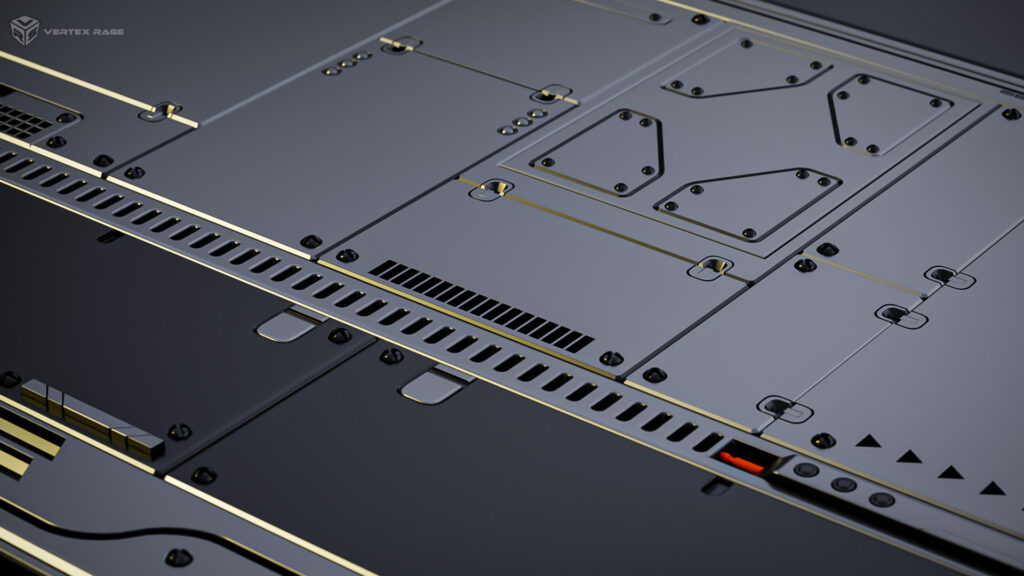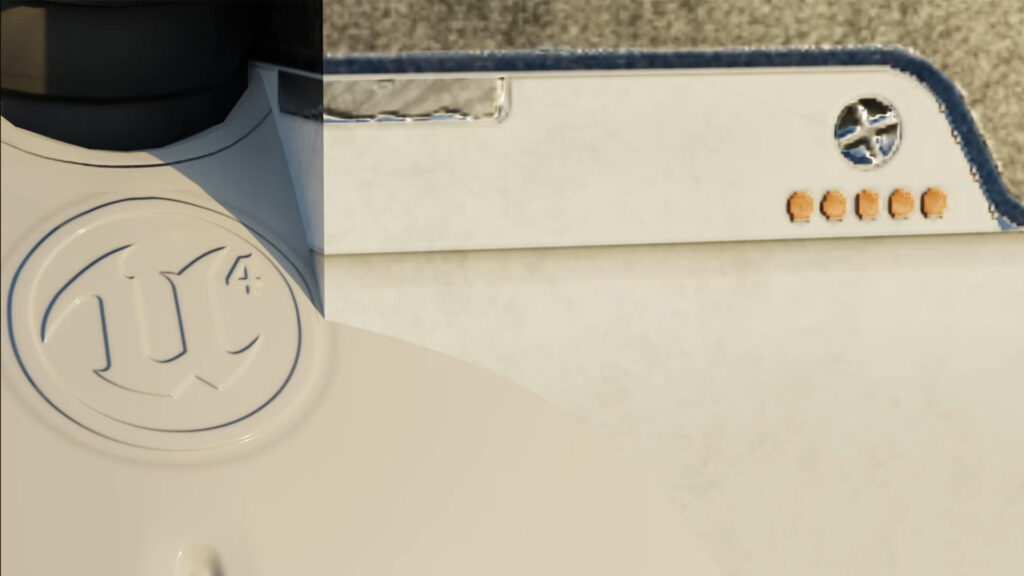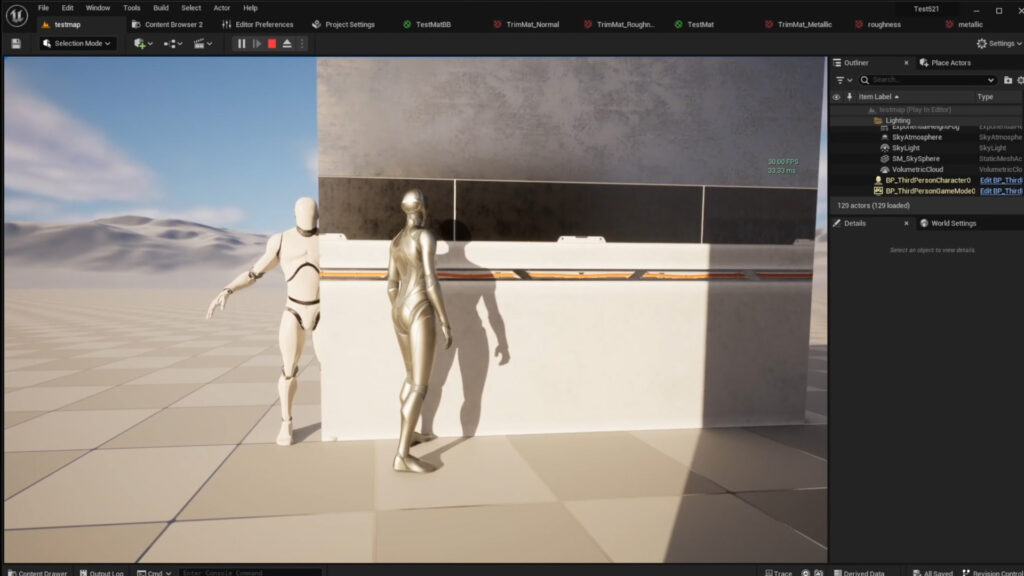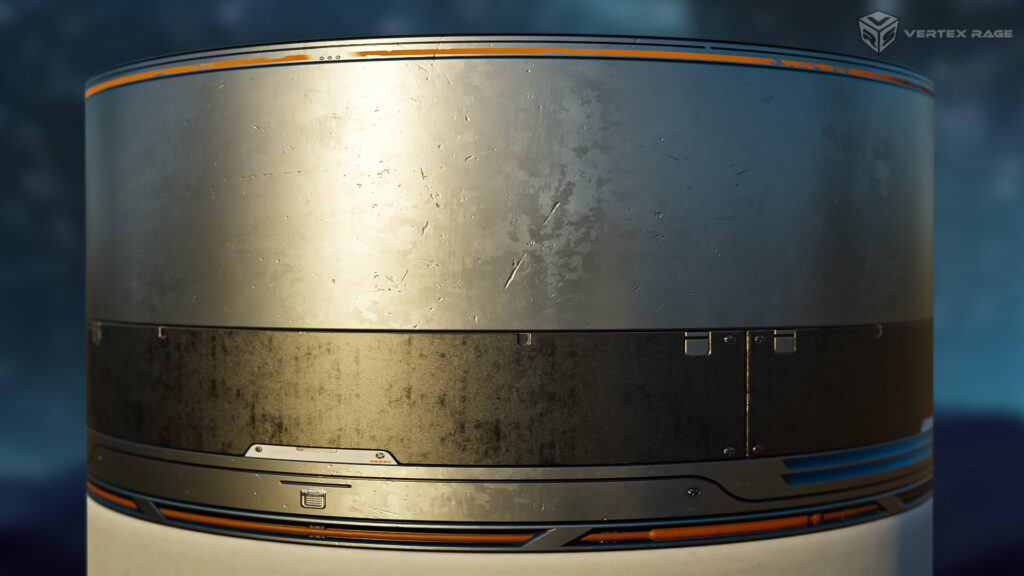
Introduction
In the world of 3D game asset creation, a recurring challenge many creators face is the inevitable blurriness of textures on their models or trim sheets after the baking process. This issue often arises even when significant effort and care are put into crafting detailed assets. The reality is that, due to the limitations of current technology and the constraints of game engines, achieving perfectly crisp textures, especially on smaller details, is a challenging feat. This inherent limitation can be a source of frustration for creators who strive for the highest level of detail in their work.
The central issue lies in the intrinsic constraints of texture rendering in game engines. Despite advancements in technology, there are still limits to how finely a texture can be rendered, particularly when it comes to small or complex details on a larger model. These limitations are often more pronounced when textures are applied to smaller components of a model, such as bolts and screws, which can lose their definition and appear blurry in the final product. Understanding these technological boundaries is crucial for creators, as it helps set realistic expectations and guides the focus towards optimizing textures within the possible scope.
For an illustrative overview and further exploration of this topic, you can view our related video:
Texel Density and Its Impact on Texturing
Texel density, a key concept in texturing, refers to the number of texture pixels, or texels, mapped to a unit area on a 3D model. This density is a crucial factor in determining the visual quality of textures. For example, a standard texel density of 1024 pixels per meter aims to balance detail with performance, providing a good level of detail for general assets. In contrast, a higher density, such as 2048 pixels per meter, allows for finer detail in the texture, which can be particularly useful for close-up views or smaller, more complex parts of a model.

However, increasing texel density is not always a straightforward solution. While using higher resolution textures or UDIMs (a method that allows for multiple texture tiles at varying resolutions) can enhance detail, they also come with performance considerations. Larger or more detailed textures require more memory and processing power, which can impact game performance, especially on lower-end hardware. This trade-off is crucial to consider in game development, where balancing visual fidelity with performance is key.
Moreover, while technologies like Unreal Engine’s Nanite offer impressive capabilities in rendering high-quality graphics, they are not a panacea for all texturing challenges. Even with such advanced technology, there are still limitations in how much detail can be feasibly rendered, especially when considering the performance across different platforms and systems. Understanding and navigating these constraints is an essential part of the texturing process in game asset creation.

Player Perspective in Texture Perception
The perception of textures in a game significantly varies based on the player’s viewpoint. When creating textures, it’s vital to remember that while a texture might appear blurry or less detailed at close range, such as in a zoomed-in view during modeling, this is not necessarily how players will experience it. During regular gameplay, players typically do not examine every small detail like nuts and bolts. Instead, they are more likely to experience textures as part of the larger scene. As a result, minor imperfections or lack of ultra-fine details that are noticeable to the artist may be imperceptible to the average player.
This difference in perception is particularly relevant when considering the player’s interaction with the game environment from various camera angles. In a first-person perspective, players might see textures differently compared to a third-person perspective. For example, textures on a character’s weapon or tool might be more scrutinized in a first-person view, whereas environmental textures might receive less focus. Therefore, understanding the typical player perspective and gameplay scenarios is crucial in prioritizing texturing efforts and allocating resources efficiently.
Textures are integral to the game environment’s overall aesthetic. They interact with elements such as lighting, shadows, and special effects, which all contribute to the player’s visual experience. The interaction of textures with these environmental factors can enhance or diminish their appearance. Consequently, considering how textures integrate and perform within the broader context of the game’s environment is essential. It’s about achieving a balance where textures serve their purpose without necessitating the highest level of detail in areas that players are unlikely to focus on intensively.

Conclusion: Balancing Detail with Practicality in Game Texturing
Understanding and effectively applying texel density is a pivotal component in the texturing of 3D game assets. Striving for high-quality textures is a commendable goal, but it’s equally crucial to contextualize this within the broader framework of the game’s environment and the player’s experience. At Vertex Rage Studio, our commitment is to provide creators with the necessary knowledge and resources to excel in this nuanced aspect of game asset creation.
In practice, achieving crisper details in textures is often possible with optimization techniques. However, these methods should be employed judiciously, considering not just the player perspective but also the broader scope of the game project. Factors such as the time allocated for each model, the performance budget (like frames per second targets), and the overall design goals of the game are essential in guiding these decisions. It’s about finding the right balance between the level of detail and practical project management, ensuring that the final product is both visually appealing and technically sound.
As we navigate the complexities of game asset texturing, we encourage creators to stay informed, experiment, and continuously refine their skills. We invite you to follow us for more insights and join the conversation. Your feedback and experiences are valuable to us and the wider game development community. Share your thoughts, questions, and experiences in the comments, and let’s continue to grow and learn together in this exciting field of game development.
